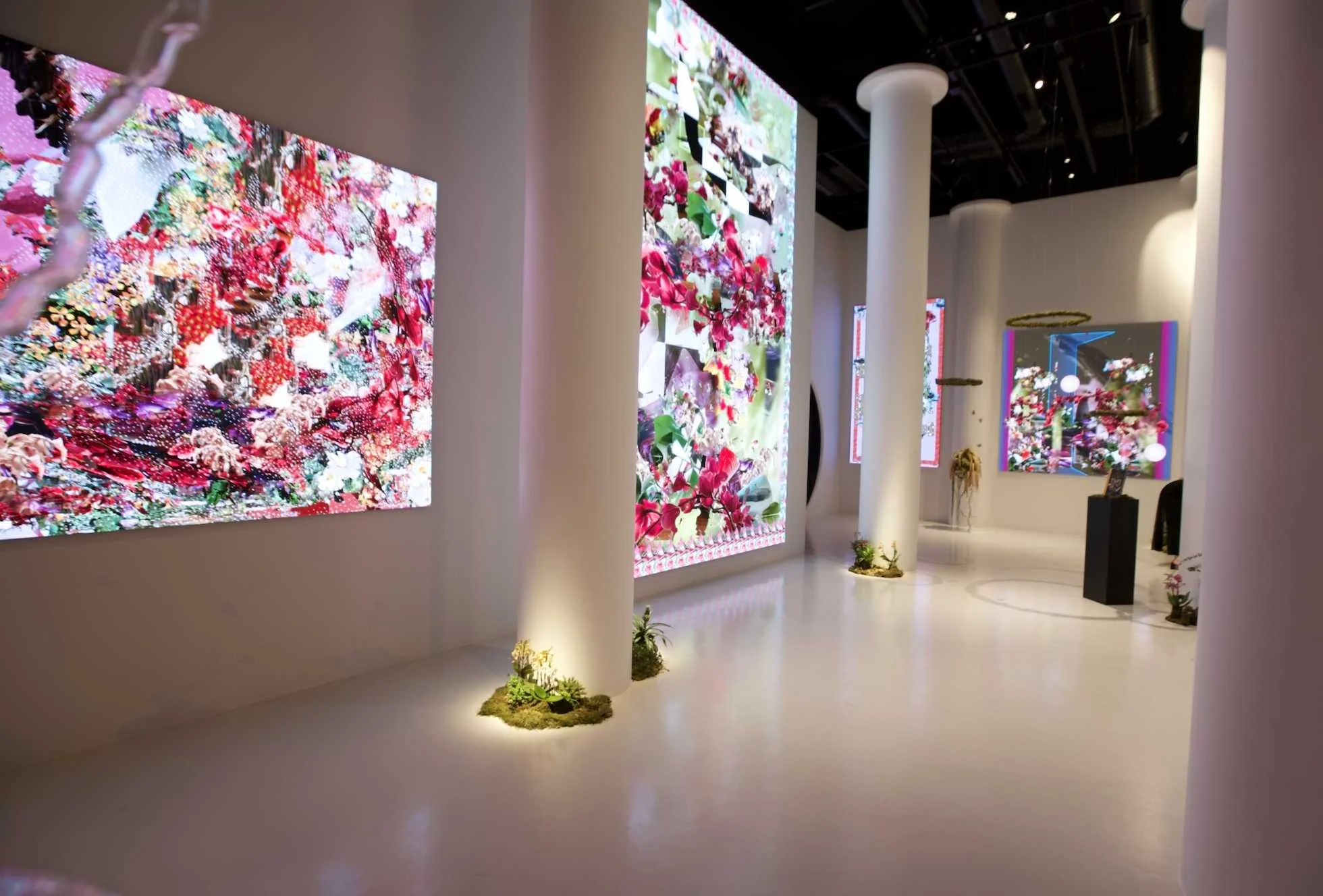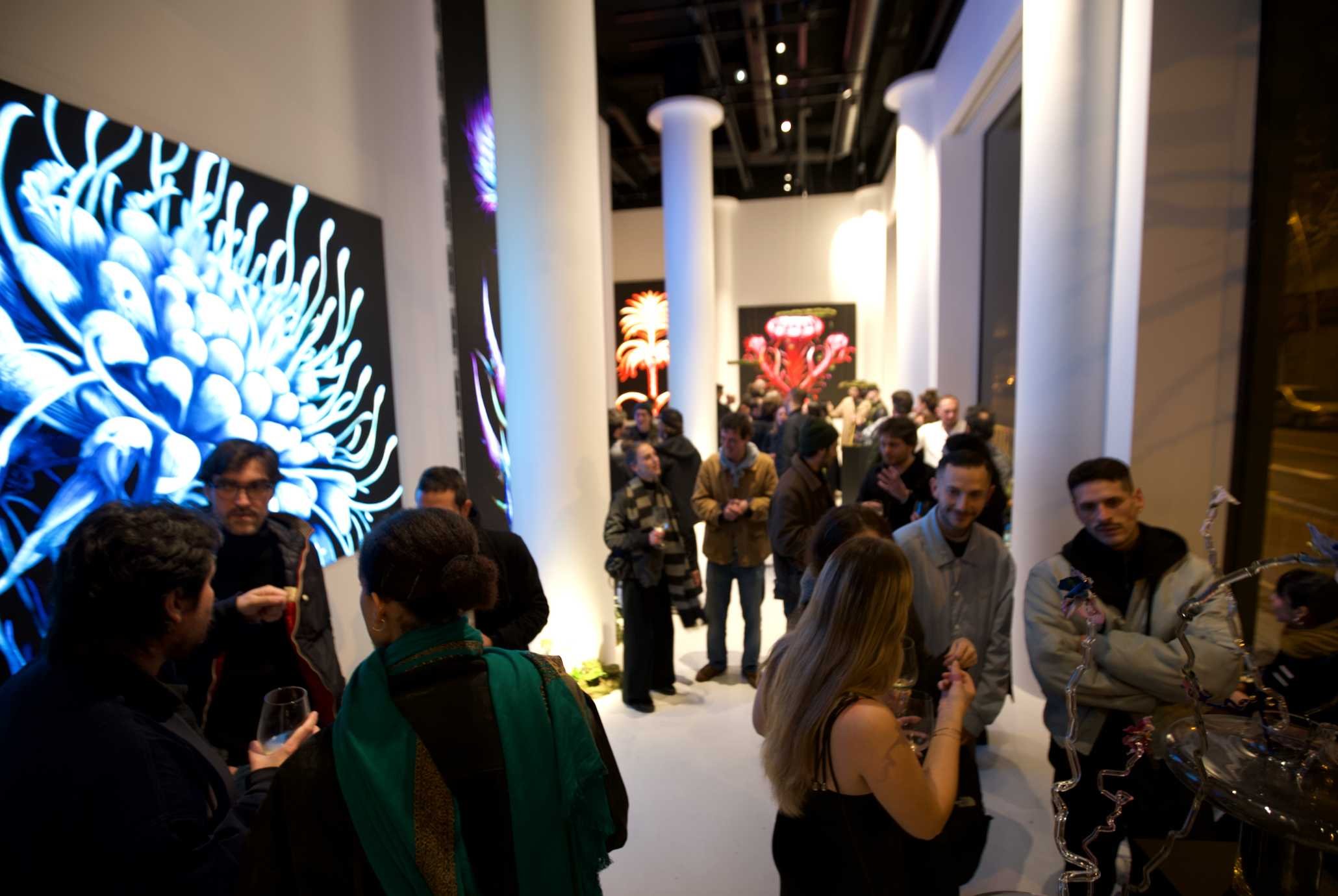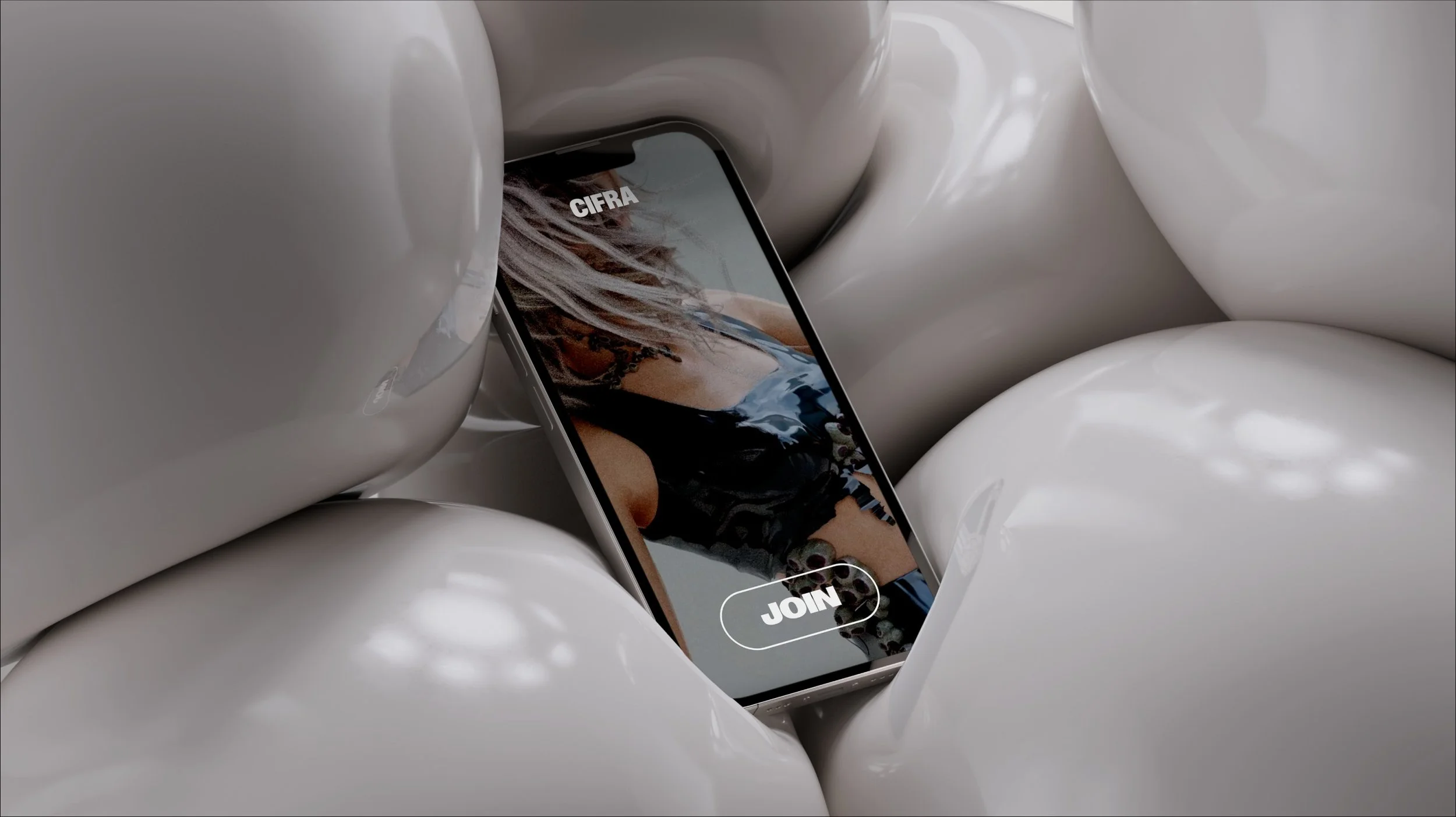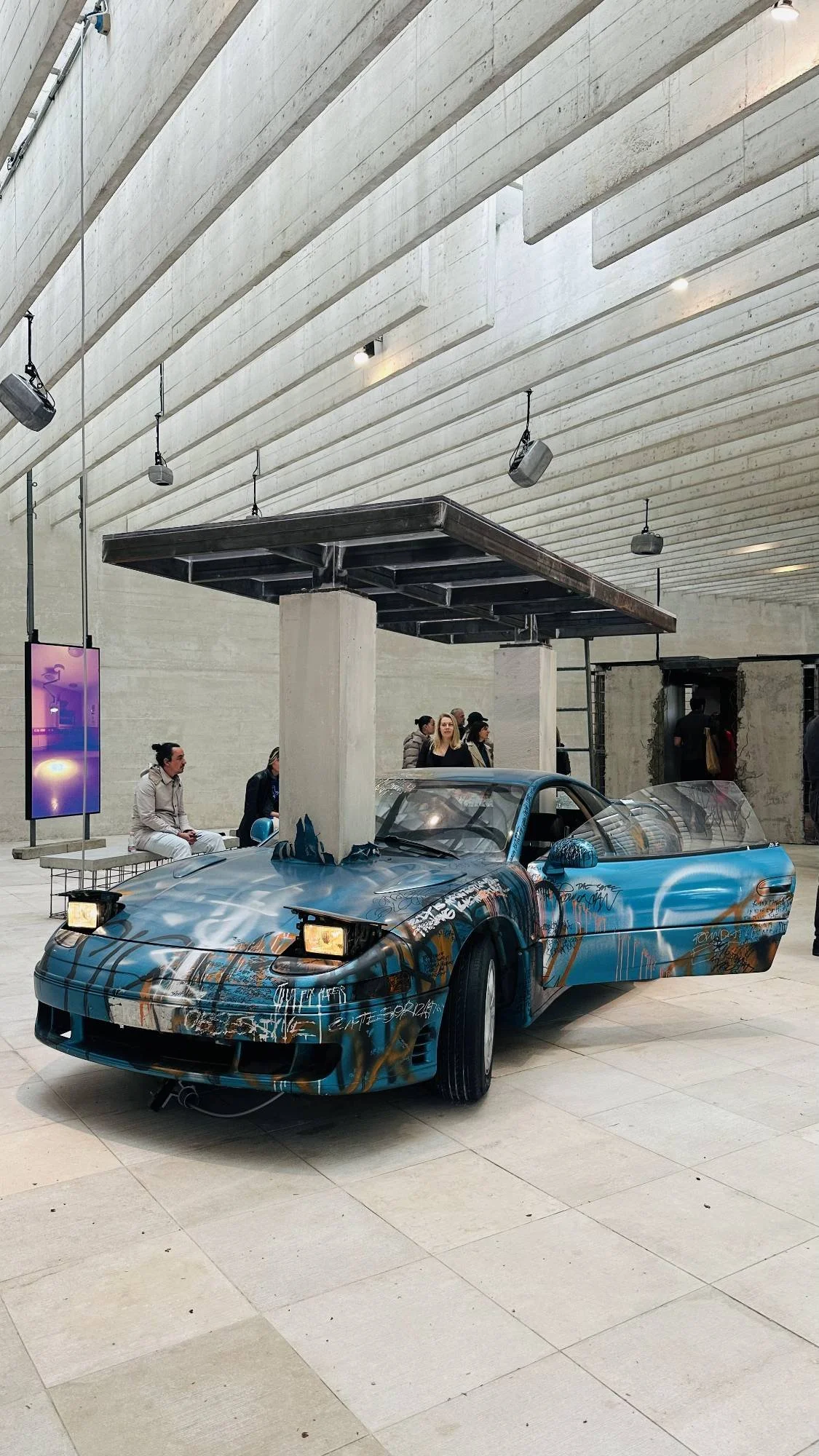Load Gallery
Recently published by Vetro Editions, Neo Botanica – An Atlas of Artificially Generated Flora is a contemporary Florilegium that explores the intersection of art, nature, and technology. The book features AI-generated flora, CGI renderings, and digital botanical hybrids created by 32 contemporary artists and collectives, including Refik Anadol, Andrés Reisinger, Anna Ridler, Ivona Tau, Monica Rizzolli, and Entangled Others. Curated by Luca Bendandi and Freya Marshall, the book is an experimental publishing project that integrates augmented reality, transforming itself into an interactive portable exhibition. The Load Gallery brings this vision to life from February 5 upon private invitation and public from February 6 to March 8, 2025, presenting a physical manifestation of these speculative botanical landscapes.
Within the concrete grids and industrial echoes of the city, Neo Botanica emerges as a sanctuary—one where nature is not merely observed but actively reinterpreted. Hosted at The Load Gallery, the exhibition curates a dialogue between organic structures and human ingenuity, reshaping our perceptions of flora beyond mere representation. Here, plants do not sit passively as objects of admiration; instead, they morph, intertwine, and challenge the rigidity of conventional form.
Each piece in the exhibition underscores a dynamic interplay between materiality and abstraction. Sculptor Mira Solis presents resin-cast botanical hybrids that distort familiar leaf patterns into amorphous, fluid silhouettes. Her work reframes nature as something both synthetic and eternal, a meditation on preservation and decay. “We often view nature as something fragile,” she remarks. “But it adapts, mutates, and persists.”
At the forefront of this intersection between AI and organic design is Refik Anadol’s Large Nature Model (LNM: Flora), an open-source generative AI project dedicated to nature. This subset of his Large Nature Model focuses on millions of floral images, uncovering the hidden structures and natural intelligence inherent in plant life. Using AI-generated visualizations, Anadol translates the imperceptible patterns of flora into a digital ecosystem, emphasizing the crucial role of conservation in sustaining biodiversity.
Entangled Others, the Lisbon-based duo of Sofia Crespo and Feileacan McCormick, present works inspired by the natural elements adorning the Palau de la Música Catalana. Created as part of Palau’s 2023-2024 artistic season, their pieces pay homage to architect Lluís Domènech i Montaner, marking the centenary of his death. By digitally reconstructing the floral motifs integral to Montaner’s architectural style, their work blurs the boundaries between historic craftsmanship and contemporary computational aesthetics.
Textile artist Elias Kwon introduces a tactile experience with his hand-dyed compositions, mimicking leaf veining while simultaneously unravelling into fragmented, chaotic threads—an allegory for ecological fragility. The suspended panels, shifting subtly with ambient movements, echo the transient and ephemeral nature of botanical life.
Meanwhile, digital artist Noor Devi challenges perceptions of botanical realism with hyper-detailed 3D animations that speculate on plant evolution in synthetic ecosystems. Her immersive projections depict forests grown from coded sequences, their algorithmic roots responding to external stimuli in real time. “What if nature could rewrite itself?” Devi poses, her work gesturing toward an era where digital organisms might cohabit with biological life in unexpected harmony.
The exhibition also features the work of installation artist Luca Ferro, whose biomorphic sculptures use bioengineered fungi and recycled plastics to mimic the self-sustaining properties of natural ecosystems. His living structures, subtly shifting in form over time, suggest a future where architecture grows rather than being built. “The boundary between living and non-living is dissolving,” Ferro notes. “We must rethink what sustainability truly means.”
Beyond individual explorations, Neo Botanica thrives in its collective resonance—a testament to the evolving discourse on nature’s role in artistic practice. The exhibition does not present a utopian return to the earth, nor does it lament ecological destruction. Instead, it situates itself in the liminal space between past and future, between what is lost and what is yet to grow.
“We’re no longer looking at nature as an untouched entity,” states the exhibition’s curator, Marco Lenz. “We’re questioning its hybridization with human intervention.”
As visitors move through the exhibition, they encounter an evolving sensorial experience—textural contrasts, shifting light, and the quiet hum of digital life merging with the organic. The Load Gallery transforms into a speculative terrain, where the botanical is not merely observed but reimagined in ways that stretch beyond immediate perception.
This exhibition is part of a broader curatorial effort at The Load Gallery, which continues to highlight artists working at the intersection of ecology and technology. Neo Botanica serves as a foundational dialogue—one that will continue to evolve as new perspectives emerge within the gallery’s ongoing program. As part of this curatorial vision, the gallery will also host a series of upcoming exhibitions that expand on related themes. In June 2025, Biolume will explore the presence of bioluminescent organisms in digital environments, immersing visitors in a landscape where light and organic life coalesce. Urban Terraforms, launching in September 2025, will showcase speculative green spaces envisioned by leading architects, questioning the role of nature in contemporary cityscapes. With Neo Botanica, The Load Gallery initiates a conversation that extends beyond its walls, engaging with an ever-expanding vision of how technology, ecology, and art converge in our world today.
Carrer de Llull, 134, Sant Martí, Barcelona, Spain
Words by Jagrati Mahaver
What to read next




















